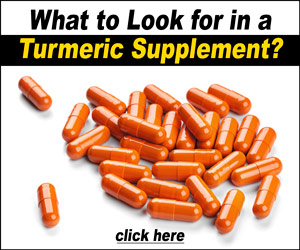Echinacea FAQs

- Is goldenseal a species of echinacea? I often see the two of them mentioned together.
No. The scientific botanical name for goldenseal is Hydrastis canadensis. It's also commonly known as ground raspberry, Indian turmeric, and curcuma. Note that goldenseal is not the same plant as turmeric, even though the scientific name of the turmeric spice commonly used in curry is Curcuma longa. The reason two herbs are often mentioned together is because echinacea and goldenseal are often found in commercial herbal formulas used for immune system support.(48)
- Are there different kinds of echinacea?
Yes. There are 9 known species of echinacea in the plant family Asteraceae. The species of echinacea typically used for medicinal purposes are E. angustifolia, E. pallida, and E. purpurea.(48)
- I've heard that a large clinical study published in 2005 proved that echinacea doesn't work for colds — is that true?
The study that was published in the New England Journal of Medicine in 2005 was a well-designed clinical trial on the effects of echinacea. However, it studied only one species of echinacea. Rigorous reviews of a large number of clinical trials published after 2005 on other echinacea species have been published. These reviews suggest evidence supports the use of echinacea to prevent and treat upper respiratory infections such as the common cold.(8, 49)
- Is echinacea safe to use if I am pregnant?
Evidence from some preliminary studies suggest taking echinacea at recommended dosage levels is safe to use during pregnancy and does not increase the risk for major birth defects. These studies are not enough to conclusively say echinacea is safe to take during pregnancy. As with all medications and herbal remedies, we recommend you discuss the use of echinacea with your licensed health care practitioner.(50)
- Is echinacea safe to use if I am breastfeeding?
Although early evidence suggests that using echinacea is safe during lactation, experts caution using the herb until more human studies have been conducted to confirm its safety.(50)
- Can I eat echinacea?
Besides adding echinacea tincture to smoothies, teas, and even popsicles, you can also eat echinacea. According to the author of Edible & Medicinal Flowers, Margaret Roberts, American Indians would fry echinacea petals with other greens and eat it as a spread over sweet potatoes. You can try it in a pressed sandwich too.(51)
- Does echinacea have any symbolic meaning?
In Native American spiritual traditions, the medicine wheel is considered the sacred circle of life. The circle is divided into four sacred directions. Each direction is associated with certain months, plants, cycles of the moon, and other natural elements. The period between January 20th and February 18th is considered the spiritually enlightening time associated with the Northern direction and is called the Deep Snow Moon. Echinacea is considered the plant of the Deep Snow Moon — appropriate since this time is considered a moon of rest and cleansing. The Native Americans believed that people born in this part of the year are empathetic and have the potential to be naturally gifted healers. In the mystical Qabalah and Tarot, echinacea is the herb attributed to the astrological sign Sagittarius.(52, 53)
- Can I use echinacea for my dog?
We recommend that you check with your dog's veterinarian first before using any herbal supplement. Some veterinarians use echinacea for dogs for the same reasons humans use it: as an immune system booster and to treat infections. Suggested dosage for dogs depends on their size.(20)
- Is it better to use whole herb echinacea supplements?
There is some research evidence that suggests that the beneficial properties of many herbs are best when taken in whole form. That's because different parts of the herb seem to enhance the health benefits of each other. Echinacea is one such herb, containing multiple therapeutic compounds that appear to work in combination. In fact, animal studies have shown that while polysaccharide echinacea components had no effect on stimulating the production of natural killer (NK) cells by the immune system, whole herb supplementation produced significant increases. The roots contain volatile oils, while the aerial parts contain polysaccharides (which stimulate the immune system). Other active constituents are glycoproteins, alkamides, and flavonoids.(12, 13)
- Does echinacea have any drug interactions?
There is good evidence that echinacea can increase the level of caffeine in the blood by 30% by inhibiting a certain enzyme called cytochrome P450 1A2 (CYP1A2). In theory, inhibition of CYP1A2 may also cause sustained levels of drugs that are metabolized by this enzyme (e.g., Tylenol®, Plavix®, and Valium®). Experts caution against using echinacea with immunosuppressant drugs (e.g., corticosteroids), theoretically because of its immune-stimulating effects.(48)
- Is echinacea used for anything other than an herbal medicine?
Yes. Echinacea is used in cosmetics and personal care products for its anti-inflammatory, healing, antibacterial, and antioxidant properties. In fact, one company (Zepter International) has a line of products for the whole family with fresh echinacea as a main ingredient. Swisso Logical®'s echinacea line includes spa, skin care, and baby products, as well as Philip for Men® and Swisso Logical Exxxtra® make-up.(46, 54)
- Can echinacea help get rid of wrinkles?
Possibly. Evidence from a preliminary clinical study showed that those participants who used creams and gels containing echinacea had improvement in both skin dryness and wrinkles.(54)


